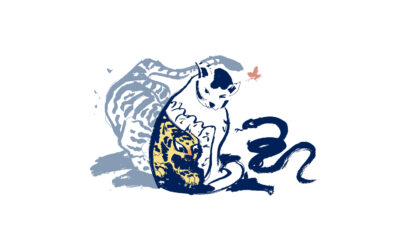In Japan, there have long been societal standards governing the onset of middle-age: a youthful preoccupation with looks must cease, and to give up (akirame) is simply the right thing to do. These cultural expectations have seen the middle-aged forced to accept the (arguably) endearing and yet entirely limiting labels of ojisan or obasan: individuals who can no longer be considered youthful or attractive, wandering around in dark clothes and worrying about receding hairlines.
More recently, however, there has been a change in direction. Not only has the domestic cosmetics giant Pola chosen the 47-year old Kate Moss as their brand ambassador, but fashion-conscious, senior influencers are on the rise. They are rejecting how society defines their age and the ageing process, and they refuse to dress in ‘appropriate’ muted colours or to lurk in the shadows. This reflects a much wider revolt: older people no longer expect to be pushed to the periphery of consumer culture, and they are actively shaping how they want their future decades to look like.
The fashion industry – long obsessed with youth – has noted this well, using revitalized campaigns, stores, advertisements and magazines to engage older men and women. Fashion magazines aimed at women aged 45 and above, for example Naturela and Story, now promote brightly coloured, ‘mature-body flaunting’ clothes: no longer are these consumers relegated to the ‘muted and slimming’ red, green and brown tones traditionally associated with their age group. These are complemented by articles on how to embrace grey hair, with styling and maintenance tips for the perfect silver coiffure. Over in the men’s corner, companies are redefining oyaji. Magazines like LEON – ‘the magazine for middle aged heartthrobs’ – now show men in their 40’s and 50’s smoking cigars at romantic bars, rather than playing golf or worrying about their metabolism slowing down.
As mainstream fashion media has caught up with the new, older influencers, so the wider public is now reflecting this changed attitude towards ageing. In 2018, 40.8% of women aged 60 and above considered greying hair to be beautiful: the comparable figures in 2016 was a tiny 8.5%. The popularity of ‘silver influencers’ continues to soar: fashion opinion leaders such as Mitsuko Kusabue and Bon & Pon are using their substantial social media following to overturn ingrained cultural beliefs. Why should individuals focus solely on being responsible and wise as they age? Their value as collaborators is also recognised by the major publication houses, who are racing to bring out style guides that inspire older people to live their best lives.
That these lives should include emotional and physical wellbeing is also increasingly recognised, with brands using key new phrases such as active senior, senior influencer and second life.
At 85, super model Carmen Dell’Orefice has become the new face of the next generation of Japan’s work force, chosen by human resources company PERSOL. Meanwhile, a fitness chain called Curves focuses on training and building a community of women with ageing concerns.
Japan’s experience shows how vital it is for brands to engage with how consumers are being influenced to reframe their view of themselves as they age. How can brands offer a diverse range of options that allow these older customers – usually with greater spending ability and financial stability – to stay inspired, forward-looking and active?



